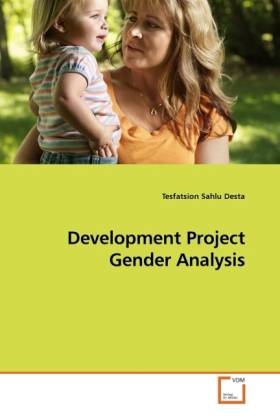
- Afhalen na 1 uur in een winkel met voorraad
- Gratis thuislevering in België vanaf € 30
- Ruim aanbod met 7 miljoen producten
- Afhalen na 1 uur in een winkel met voorraad
- Gratis thuislevering in België vanaf € 30
- Ruim aanbod met 7 miljoen producten
Zoeken
Omschrijving
Poverty and gender inequality are among the most pervasive and persistent global problems and challenges. Poverty affects women and men, but the impacts are different based on their sex, age, ethnicity, race, economic status, education, literacy, and disability. For example, worldwide, 70 % of those living in extreme poverty are women (Stephanie, 2005). As gender inequality exacerbates poverty, poverty often leads to increased gender disparity. Both poverty and gender inequality are human rights violations. The human rights approach must ensure that development benefits all. This book covers key gender concepts and outlines the methodologies used in gender analysis to assess the differential impact of a development program or project on females and males and on gender relations. It is worth reading for those who are involved in policy dialogue; program development; project design, monitoring and evaluation; researchers, students and instructors. It equips them with a sufficient understanding of gender issues and analysis in order to mainstream gender equity and balance in their work and effectively assess work done by the Government, development partners and contractors.
Specificaties
Betrokkenen
- Auteur(s):
- Uitgeverij:
Inhoud
- Aantal bladzijden:
- 76
- Taal:
- Engels
Eigenschappen
- Productcode (EAN):
- 9783639252125
- Uitvoering:
- Paperback

Alleen bij Standaard Boekhandel
+ 96 punten op je klantenkaart van Standaard Boekhandel
Beoordelingen
We publiceren alleen reviews die voldoen aan de voorwaarden voor reviews. Bekijk onze voorwaarden voor reviews.








